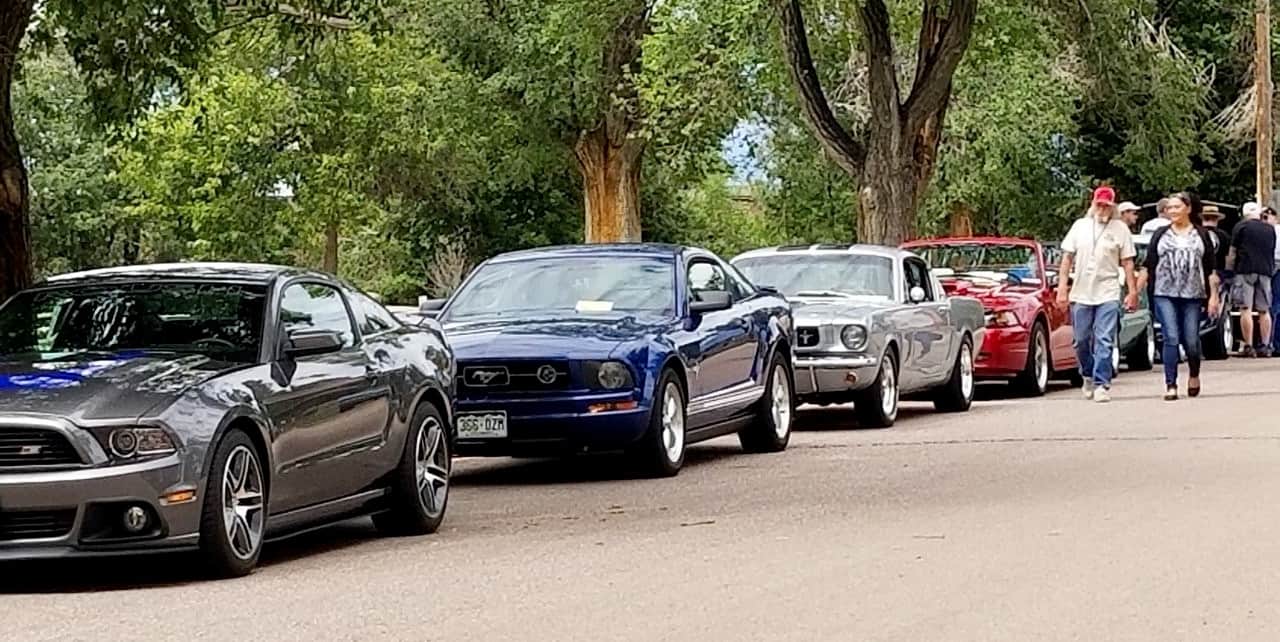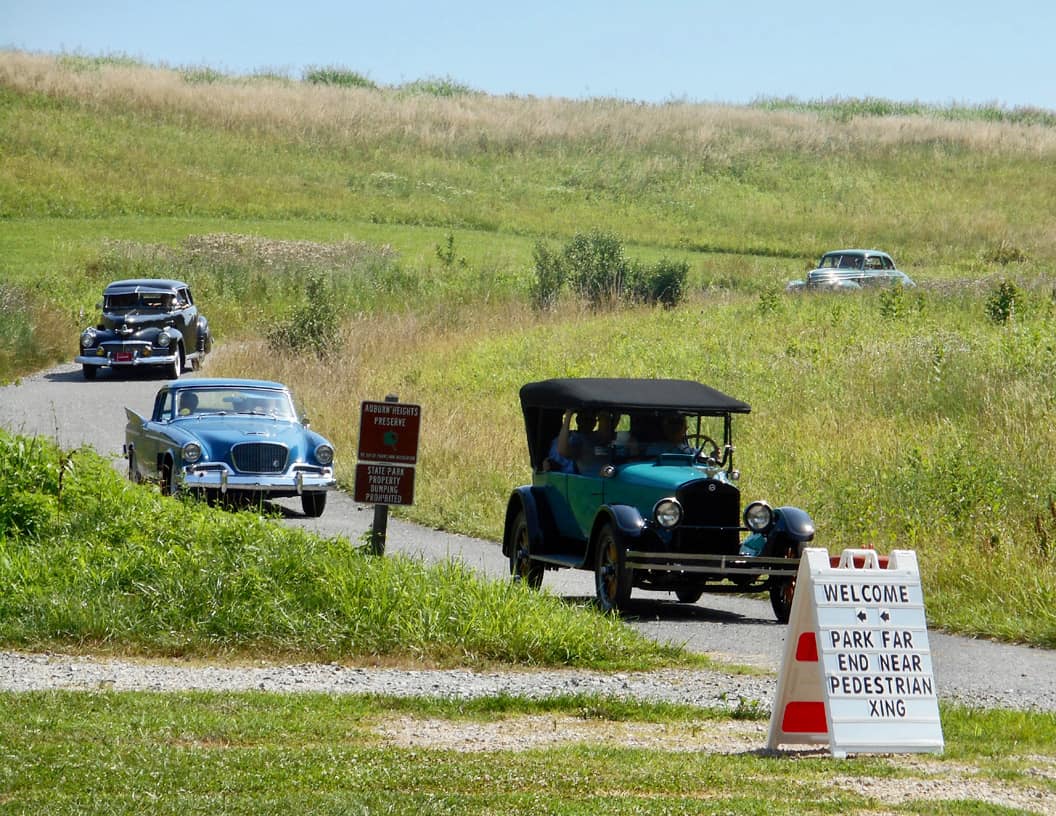(Editor’s note: During the month of May, the ClassicCars.com Journal is publishing a series of stories about buying your first, or perhaps your next, collector vehicle. Today, as part of our month-long buyer’s guide, Andy Reid shares his experience as the buyer of more than 100 such vehicles and has tips for buying your first. If you have a story about your experience buying your first collector car that you’d like to share, please send it to us at [email protected].)
So you are looking to buy your first collector car and are wondering where to start. I’m here to help, and bring along the experience of having owned more than such vehicles over the years — and I have done it right and done it wrong.
And now I’m willing to let you benefit from my experience in buying collector cars with you so that your first one, or perhaps your next one, is one you will love and enjoy while avoiding mistakes when making its purchase.
The first thing you should do is to decide on the type of collector car you would like to buy. Is it a European sports or GT car? Is it a car of iconic design? Or do you perhaps want an American luxury car or a Detroit muscle car? Maybe you are considering a Japanese car?
Making that decision is the first step in the process.
The next step after you focus in on the car is to find one that you can drive, and that’s drive before your buy. Ideally, this is not done at a dealership but in a privately owned car that is not for sale.
The way you do this is to connect with the car club associated with your dream car and reach out to members via the club website message board or social media page and say you are in the market for one of these cars and would like to drive or ride in that car before you buy one.
This is important because you need to be sure that the car you are looking for actually works for you. You may find that the seats in the car you think you want are terrible, or that the specific car you are looking at is in reality just a bit too basic or too complicated for you, or is a car you simply do not fit inside it.

Complication does not mean computers, but could mean a non-syncro gearbox, a 2-stroke engine that requires oil to be added to the fuel at each fill up, or expensive service needs.
You may find out that after doing this you don’t really want a classic Hemi Cuda or an MGB but instead want a newer Dodge Challenger Hellcat or a BMW Z4. This is where you need to listen to both your heart and your head.
Either choice can make sense if it is the car that best fits your lifestyle, your expectations, and your personal preferences. There is no wrong choice except for having unreasonable expectations of the car.
If, after driving the car, you still want it, then immediately join the car club, which will provide you with new friends, new driving experiences, and tips on replacement parts and trusted places for proper service.
After you have made the informed decision that the car of your dreams is actually something you want to own, what I do is find the best book written on that specific model — and then I read it cover to cover.
Yes, there is a lot of information on the internet, but not all of it is correct. Books on specific model cars go thru a much more extensive vetting process, and having learned the information in that book will make you a much more educated buyer. Many of these books will also give you a good idea on the true ownership costs of the car in question.

Next, do some pricing research on the car to find out what it will really cost to buy (and to operate) a good example of the car. Notice I say good example as unless your goal is to restore a car you will want a car that you can drive and enjoy immediately.
There are a number of ways to determine the value of the car. One is thru the Hagerty Valuation tool online. This tool will give you a nice overview of the value of your dream car, but don’t stop there. Next, look at sites like AutoHunter.com and Bring a Trailer and see what the latest price trends might be.
The final step is the fun part, go shopping. The obvious places are internet sites such as ClassicCars.com, but don’t overlook the club website. Often cars owned by members of the club are better described, offer more specific information and, as an added bonus, sometimes are less expensive, plus you might not only see the car but drive it before you buy.
Also talk to your new friends in the club because they may know of an owner ready to sell but has yet to advertise the vehicle. Club members often know about cars hitting the market before they are posted and thus might represent good deals.
Regardless, be sure that once you have zeroed in on the perfect car within your budget to secure a pre-purchase inspection done by a specialist in that specific model. This again will save you money while giving you a good idea of anything that needs immediate attention.

However, you also need to understand that, at a fundamental level, no collector car, especially one 25 years old or older, is going to be perfect. I always figure that any collector car I buy is going to need something unless it just rolled out of restoration and has been shaken down by a shop like Paul Russell and Company, and even then, it may still need some fettling.
I always budget at least $1,500 that will be needed immediately for inexpensive cars such as an MGB or Ford Mustang, around $3,000 for any classic Porsche or BMW, and considerably more for something like a Ferrari or Aston Martin.
This is not the owner hiding anything from you but simply a fact of life with older cars. You are not buying a new Lexus LS, but you may be buying a car that might be older than you are. Keep this in mind while you are shopping and be sure that you have the money to afford the car and the needs it will have moving forward. If you do this, you will not have any surprises.
I hope I have not dissuaded you from deciding to join the collector car hobby. I have had countless unforgettable adventures in this hobby and have made some of the greatest friends in the world from all over the world.
The fun, camaraderie and experiences I have had more than make up for the costs associated, and I would not trade the decades I have been involved in the collector car hobby for anything.






My 1st purchase was pure impulse & passion.
Very good information regarding allowing the $1500, $3000 or more. I’m thinking it’s more on the order of $2500, $5000 and up unless you are doing the work. Think about replacement parts. An MGB is simple. Everything is available vs rare Jeepsters where many parts aren’t.
Also Carfax doesn’t exist and for the older vehicles. Don’t be surprised to find “Possible Odometer Rollback” because the age doesn’t match the expected annual mileage and titles are branded Mileage Exempt.
Finally someone who has owned as many as I have! Of course at age 72 now, some of my cars owned were destined to become collectables even though I did not know at the time! A perfect example would be my 3rd car – a gently used 1960 Pontiac Bonneville former company exec car with EVERY option, including power everything, tri-power carb, 8-lug aluminum rims, and even a crude cruise control! I paid $1500 after I would drive to the dealership several nights in a row to see it on a turntable in a glass enclosed jut-out and just drool! I traded in my like new 1966 Barracuda Formula-S 4-spd! Both of these cars were just “used cars” at the time, but have since become very desired expensive collectables!
Fantastic article, Andy. I’ll look forward to your upcoming, extensively-vetted, book. 🙂
Take care. Be safe.
Great advice Andy! I bought my first car for $325, a 1966 Mustang convertible with a 289 3-speed. My problem was always storage space and being able to drive and maintain the cars. I kept my 2000 S2K in a car trailer when I didn’t have a garage, but the Mustangs and the GTO did not fare as well in the driveway. Living on a hurricane-prone island has not helped matters.
Hello, my name David and I’m looking to buy my first collector car (1958 Impala) and was happy to read this great article. There are many things that worry me about purchasing such a iconic vehicle and this will probably seem odd but the length of the vehicle is one, not knowing if a 58 Impala with a continental kit even fits in my garage? Can anybody assist with the length? I understand there are several different types of kits but any help is appreciated. Thank You in advance, David Zamora
Hey David that is a very good thing to know. I was going to buy a Rolls a few years ago and it was 22 inches longer than my garage. What i did was find cars for sale on the classiccars.com site and had the owners measure the complete length of the cars they were selling. Most are more than happy to do this.
I hope this helps and good luck in your search. 🙂
Andy
My sister would like to buy a car, which is why I encouraged her to buy auto insurance too since this will protect her just in case damage occurs. Aside from this, we also share the same opinion that she should test drive the car first. We’ll keep in mind to seek recommendations from friends and neighbors too.